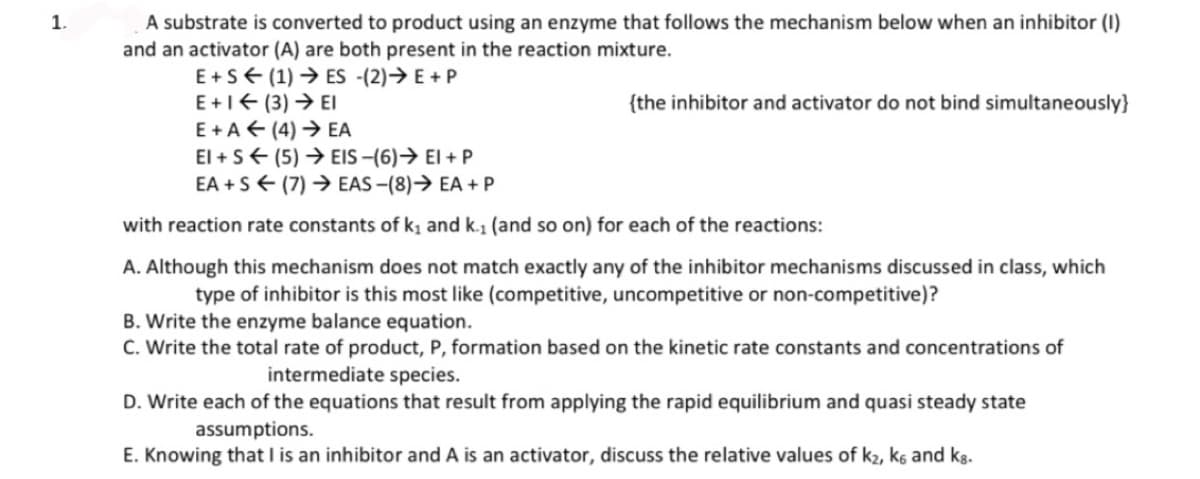1. A substrate is converted to product using an enzyme that follows the mechanism below when an inhibitor (1) and an activator (A) are both present in the reaction mixture. E+S (1) ES -(2)→ E+ P E+I (3) EI {the inhibitor and activator do not bind simultaneously} E+A← (4) → EA El+S (5) → EIS-(6)→ EI + P EA+S (7)→ EAS-(8)→ EA + P with reaction rate constants of k₁ and k.₁ (and so on) for each of the reactions: A. Although this mechanism does not match exactly any of the inhibitor mechanisms discussed in class, which type of inhibitor is this most like (competitive, uncompetitive or non-competitive)? B. Write the enzyme balance equation. C. Write the total rate of product, P, formation based on the kinetic rate constants and concentrations of intermediate species. D. Write each of the equations that result from applying the rapid equilibrium and quasi steady state assumptions. E. Knowing that I is an inhibitor and A is an activator, discuss the relative values of k₂, k6 and kg.

Since you have posted a question with multiple sub-parts, we will
provide the solution only to the first three sub-parts as per our Q&A
guidelines. Please repost the remaining sub-parts separately
Enzymes are biological catalysts that catalyse biochemical reactions. They alter the rate of the reaction but do not affect the reaction equilibria. Enzymes can be regulated by various factors, including inhibitors and activators, that can alter their activity and ultimately affect the rate of the reaction.
In this question, we consider a mechanism in which an inhibitor and an activator are both present in the reaction mixture, and we are asked to determine the type of inhibition this most closely resembles, write the enzyme balance equation, and derive the total rate of product formation based on the kinetic rate constants and concentrations of intermediate species.
Trending now
This is a popular solution!
Step by step
Solved in 4 steps


